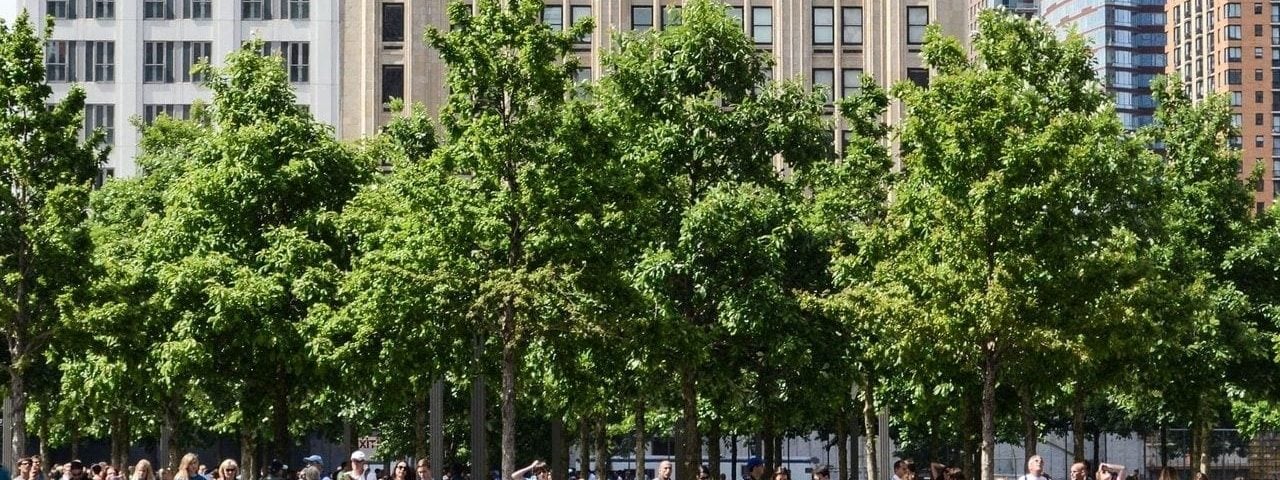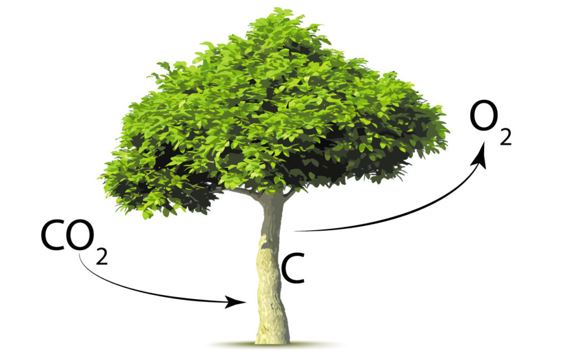
When we talk about trees, images of large, green, healthy plants come to mind, inspiring fantastic characters, things that can provide us with tasty food… However, trees are still unknown giants in our society. We’re unaware of the vast number of benefits and functions that trees can have and which ones we can use in our development as a society.
Since ancient times, the tree has represented life in different mythological, philosophical, and religious traditions. In Christianity with the tree of life; in ancient Egypt with the acacia of Saosis; and in Islam with the tree of immortality. Why has what was a precious asset throughout our species’ history been cast aside in our present-day cities?
Of course, the exception is that trees are ornamental in our surroundings: they dehumanize and de-artificialize (a term coined by the French Office for Biodiversity’s Resource Center for Ecological Inventiveness). There are, as we’ve mentioned, many factors and benefits that trees offer us and directly affect our day-to-day lives. Here are a few of them:
- Reducing existing air pollution.
Today, given the increase in large cities’ population and the flight from rural areas, cities are getting denser. This, along with higher pollutant emissions into the air, makes tree reduction a dangerous and significant factor in caring for air quality.
Through photosynthesis and their conversion of carbon dioxide into nutrients and oxygen, trees can help improve air quality and therefore mitigate pollution and greenhouse gases.
A tree can absorb an average of 10 kg of CO2 per year. Thus, trees, along with oceans, are considered the biggest “carbon sinks.” Species like the Aleppo pine can absorb about 50 tons of CO2 in a year. However, we can’t forget that we have to try to find a balance between the species in question and the environment to which it belongs.

- Modifying and softening the local climate
There’s a phenomenon at work that’s thermal in origin and occurs mainly in highly densified and urbanized urban areas; it results in a temperature difference between city centers and their perimeter or suburban areas that is notably higher at night. This phenomenon is called the heat island effect.
In large cities with massive buildings, air temperature can vary between 1 and 12ºC compared to less dense areas.
- Wind damping
Wind is a climate factor that can often cause significant physical damage for people. Wind can act on buildings, walls, fields, etc. Strategic tree placement can help control wind erosion and protect certain urban places that are frequented by people.
In large cities and those with high-rise buildings, the large air flows that may occur can give rise to vertices of turbulent air flows that get bigger as they move among the buildings. Streets with large buildings and parallel facades can lead to what is known as a wind tunnel; this phenomenon can be uncomfortable and even dangerous for pedestrians or vehicles traveling through those places. When wind travels through these vertical walls, it accelerates, creating areas of high and low pressure.
- Reducing noise pollution
Of the common pollution agents, noise is one of the most annoying, affecting health-related aspects like rest. Unlike other materials, tree placement between populated areas and roads serves as a buffer, absorbing noise and eliminating it.

There are countless documents, articles, and publications that offer clarity on this topic. Above all, they can allow decision-makers and designers of future projects to learn about the endless benefits that incorporating trees can bring to their projects and incorporate them into their own DNA to modify the vision of their projects.
Below is a list of readings for those who wish to delve into the article’s subject:
“Influencia de la vegetación en los niveles de ruido urbano”(INFLUENCE OF VEGETATION ON URBAN NOISE LEVELS)” (Martha Isabel Posada, María del Pilar Arroyave, Carlos Fernández. Revista EIA, ISSN 1794-1237 #12, p.79-89. December 2009)
“Beat the Heat: How Design Can Keep You Cool” – Treehugger
“Protocolo de gestión de alcorques (TREE PIT MANAGEMENT PROTOCOL)”
“¿Qué son las islas de calor urbano? (What are urban heat islands?) (Andonay Perrozzi, 5 Jan 2021)





There are no comments yet